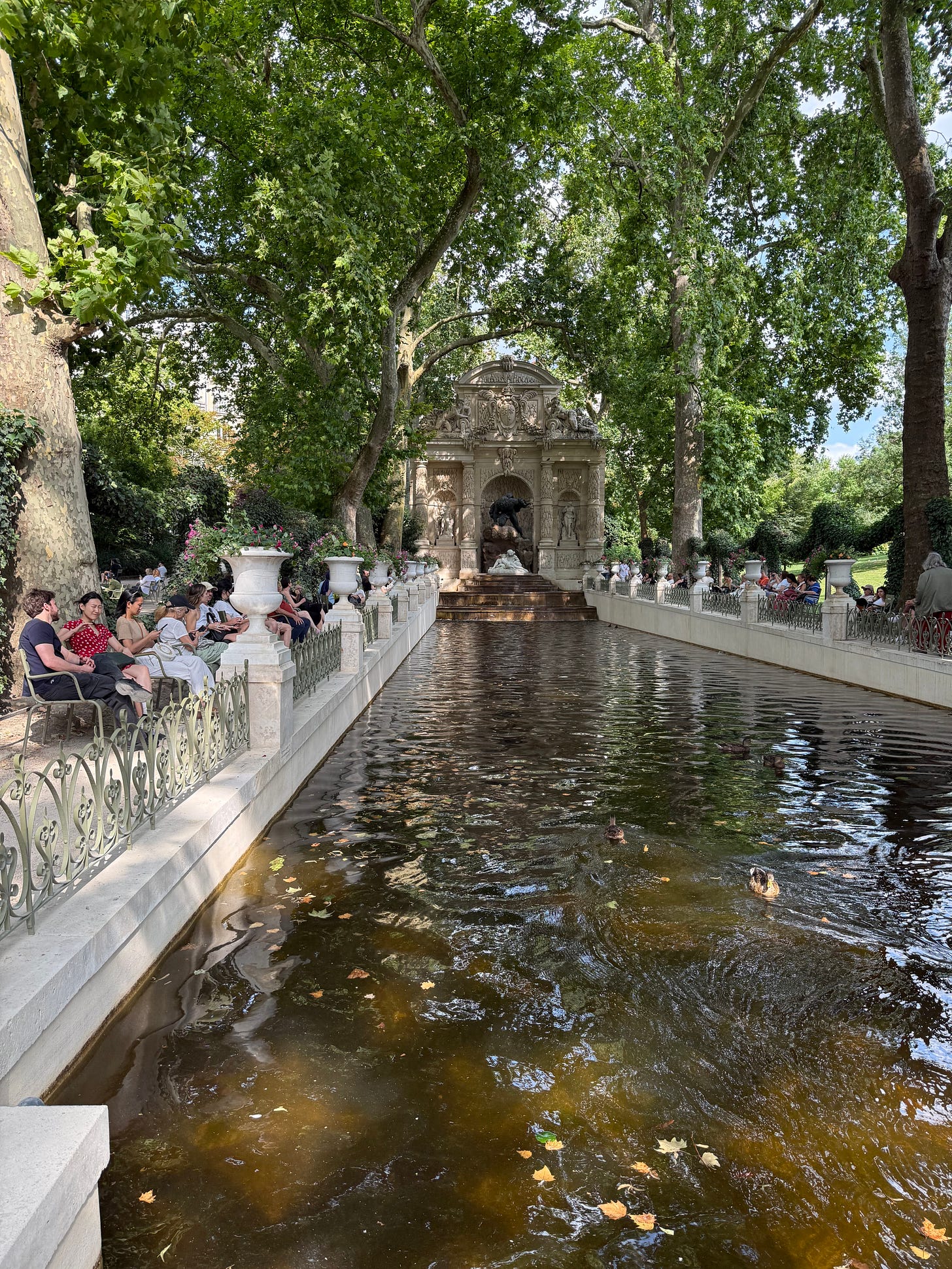The Memory Map: How Places Unlock Our Hidden Past
We're all walking libraries of experience, carrying within us the accumulated wisdom of everywhere we've been and everyone we've met.
I was walking through the streets of Paris last week on a family trip when something remarkable happened. As I navigated the city using Google Maps on my phone, watching little icons for cafés and restaurants pop up on the screen, I realized I was simultaneously navigating an entirely different kind of map—one that existed only in my mind. Call it a memory map.
Every corner we turned, every street we walked down, seemed to trigger what felt like flashbulb moments—those sudden, vivid recollections that psychologists tell us can feel more real than reality itself. These weren't just casual reminiscences. They were full-sensory time travel experiences that transported me instantly back to different chapters of my life.
The British Pub That Lives On
Take the British pub that used to be tucked away on a side street in the 6th arrondissement. It's not there anymore—gentrification claimed it years ago—but I knew exactly where it had been. Standing on that corner, a scene flashed through my mind like a movie reel: the warm glow of amber light through frosted windows, the sound of expat voices mixing English and broken French, the sticky feel of the wooden bar top, the way we'd all gather there after work to create our own little bubble of familiarity in a foreign city.
The memory wasn't historically accurate, I'm sure. It was probably a composite of dozens of different evenings, different conversations, different people. But the feeling was undeniably real—that sense of belonging to a temporary tribe of displaced souls finding comfort in each other's company.
Passing a familiar subway entrance, I could suddenly feel the morning rush of heading to work years ago. Walking by Notre Dame, I was transported to a midnight Christmas mass, the cathedral filled with flickering candles and hushed reverence. Even a random corner triggered the memory of a tiny shop that used to sell exotic "American" groceries—Oreos and peanut butter that felt like treasures from home to homesick expats. All these places, some transformed, some vanished entirely, but all still vivid in my internal geography.
The Irony of Navigation
The irony wasn't lost on me that I was now using Google Maps—a technology that didn't exist during my childhood visits to Paris—to navigate the same streets that were simultaneously triggering these vivid memories. In the 1980s, we relied on paper maps and the kindness of strangers for directions. We got lost more often, but perhaps we found more in the process.
These memory maps don't appear on any app store. They're deeply personal, shaped by our individual experiences, relationships, and the emotional significance we've attached to particular places. They're also unreliable narrators—mixing truth with fiction, combining multiple experiences into singular moments, and influenced by everything from our mood to the weather.
The Geography of Self
What fascinates me about these memory maps is how they reveal the geography of our inner lives. They show us not just where we've been, but who we were when we were there. They're evidence of our capacity for transformation—how the same person can contain multitudes of different selves across time and space.
These mental maps also highlight something crucial about human experience: our deep need for connection to place. We're not just passing through locations; we're actively creating meaning from them, weaving them into the fabric of our identity. Every street corner, every café, every hotel lobby becomes a repository for pieces of ourselves.
The Power of Return
Returning to places from our past—whether childhood neighborhoods, former workplaces, or cities we once called home—offers us a unique gift. It allows us to witness our own growth and change with startling clarity. We can see not just how these places have evolved, but how we have evolved in relation to them.
The memory map reminds us that we're all walking libraries of experience, carrying within us the accumulated wisdom of everywhere we've been and everyone we've met. These internal maps are perhaps more valuable than any GPS because they don't just tell us where we are—they remind us who we are, and more importantly, who we've become.
In a world increasingly dominated by digital navigation and virtual experiences, maybe we need to pay more attention to these analog memories. They're not just nostalgic indulgences; they're essential navigation tools for understanding the journey of becoming fully human.
Your Turn to Map
I invite you to start thinking about creating your own memory map. What places from your past still trigger those flashbulb moments? What locations hold pieces of your former selves? The next time you find yourself somewhere that feels familiar, pay attention to what bubbles up from your subconscious. Notice not just what you remember, but how those memories make you feel about who you were then and who you are now.
Your memory map is waiting to be explored. All you need to do is start walking.




